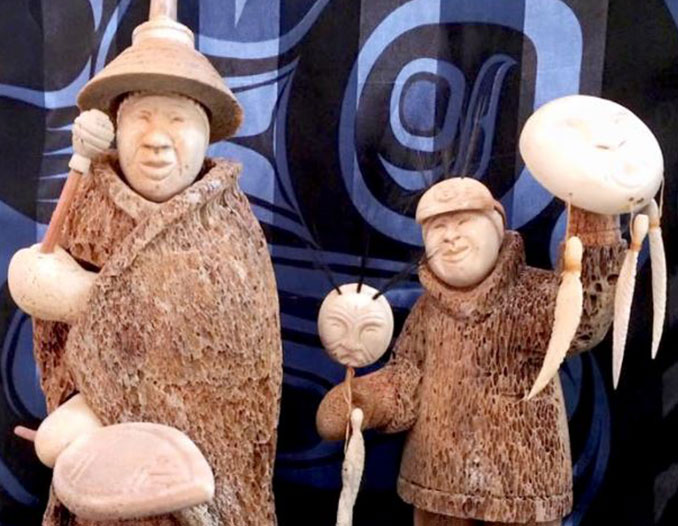Whalebone & Moose Antler Carving
This sculpture has been crafted in the tradition of the North, utilizing natural whalebone material
obtained in rural Alaska. Before the introduction of lumber and other building supplies, whalebone was a critical construction material in the treeless arctic environment. It was used for house frames, sleds, utensils and tools. As a sculpting material, it was made into dolls, charms, fetishes and masks.
Some of the whalebone currently used for sculpting is found in ancient hunting sites or from natural
“washups” of the giant skeletons and skulls found on the beaches. This type of mineralized bone ranges in age from several hundred to perhaps thousands of years old.
Today, artists use whalebone due to the interesting textures, shapes and special qualities not found in other materials. Whalebone sculptures are also highly imaginative and innovative. Often, the design is simply an extension of the natural shape of the bone.
As carvers continue to create artwork from this intriguing material, whalebone will always stand out as a truly unique art form.
Moose Antler
The male Alaska Moose or “Giant” Moose naturally shed their antlers every year during late autumn or winter after breeding season. These natural sheds are found by chance in the Alaskan tundra, and may consist of gray or tan, and more rarely, green, pink or purple colors depending upon where the antler lay and for what period of time the antler was exposed to the elements. Moose antler may reach up to 80″ wide depending upon the health and age of the animal.

